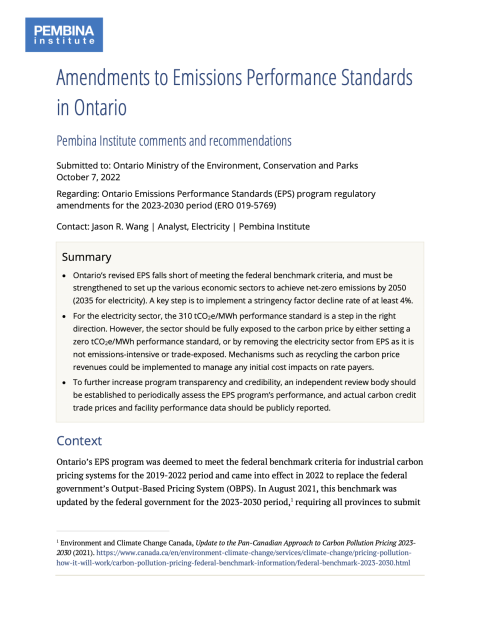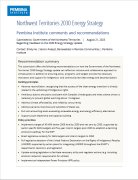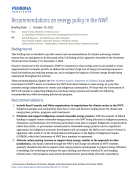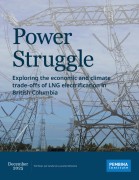Ontario’s Emissions Performance Standards (EPS) program was deemed to meet the federal benchmark criteria for industrial carbon pricing systems for the 2019-2022 period. In August 2021, this benchmark was updated by the federal government for the 2023-2030 period, requiring all provinces to submit details for how they would meet the benchmark, or else need to implement the federal Output-Based Pricing System (OBPS). The OBPS itself is not aligned with net-zero yet and is currently being updated to align with the same federal benchmark criteria.
In April 2022, Ontario released its principles for a revised EPS, and in August, released its proposed amendments to the EPS. The Pembina Institute recognizes some improvements in the revised EPS; however, the proposed EPS amendments falls short of aligning to the federal benchmark and does not provide a clear path to a net-zero grid.
A stringent and credible EPS is paramount to creating policy certainty for Ontario businesses and industries. An EPS that is aligned with a net-zero pathway can bring long-term economic benefits and support innovations like carbon capture, utilization, and storage; green steel; and clean cement, which need to be rapidly deployed in Canada and globally. The Pembina Institute recommends the Ontario EPS be amended in line with the following principles to provide policy certainty and unlock low-carbon prosperity:
- Maintain the incentive to reduce GHG emissions, aiming to achieve net-zero by 2050 (2035 for electricity sector)
- Be targeted by applying protection only to sectors that are truly emissions-intensive and trade-exposed
- Be transparent, with support for emissions-intensive trade-exposed (EITE) sectors supported by available data
- Be consistent across sectors and firms
- Be temporary, understanding that support should be phased out as other jurisdictions implement equivalent GHG-reduction policies
- Be simple to implement, administer, and comply with.
This submission only addresses specific areas outlined in Ontario’s EPS proposed amendments and is not comprehensive.
Summary of recommendations
- Ontario’s revised EPS falls short of meeting the federal benchmark criteria, and must be strengthened to set up the various economic sectors to achieve net-zero emissions by 2050 (2035 for electricity). A key step is to implement a stringency factor decline rate of at least 4%.
- For the electricity sector, the 310 tCO2e/GWh performance standard is a step in the right direction. However, the sector should be fully exposed to the carbon price by either setting a zero tCO2e/GWh performance standard, or by removing the electricity sector from EPS as it is not emissions-intensive or trade-exposed. Mechanisms such as recycling the carbon price revenues could be implemented to manage any initial cost impacts on rate payers.
- To further increase program transparency and credibility, an independent review body should be established to periodically assess the EPS program’s performance, and actual carbon credit trade prices and facility performance data should be publicly reported.












